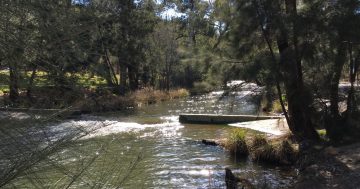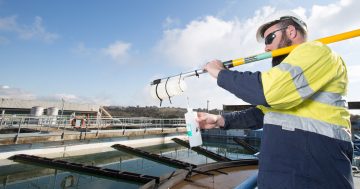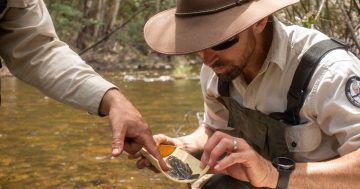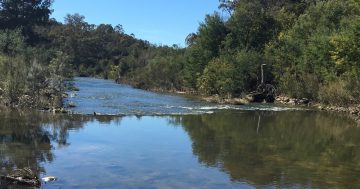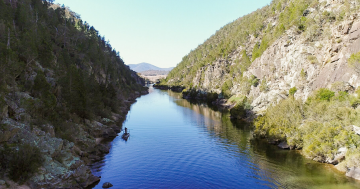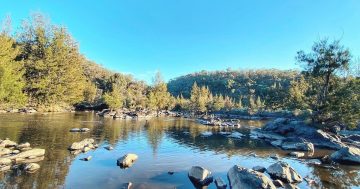
Land manager Brett McNamara marvels at the unprecedented amount of water in storage for Canberra.
“Today, the enlarged Cotter Dam, Bendora, Corin and Googong dams are all overflowing,” Mr McNamara said.
“So our catchments are at capacity and this is the first time all four dams have overflowed at the same time.”
At the Cotter Dam, water cascades 80m down over steps engineered to disperse its energy, before gently landing into a spilling pond below.
Returning to the Cotter River for several hundred metres, the water flows alongside an avenue generations of Canberrans have cherished.
ACT Parks and Conservation regional manager Mr McNamara almost burned to death, lost his home and grieved for the Cotter Avenue in the aftermath of the 2003 Canberra firestorm which destroyed 90 per cent of Namadgi National Park.
“I have strong memories of the old picnic area and camping ground and playground, made out of the Koppers logs,” he said.
“It was just smouldering after the fires had swept through. The bridge had burnt down, all the trees were completely smashed, it was like a war zone.”
The avenue later became a construction zone for the Cotter Dam’s enlargement and now, peaceful as the sun-baking water dragons along the river banks, settles into a new chapter of Canberra’s history.
“This resonates with generations of Canberrans, the Cotter Avenue, old Cotter pub, ‘back to the Cotter’ sort of stuff,” Mr McNamara said.
“And it speaks of early recreational Canberra, the 1920s and ’30s, when the Federal politicians and bureaucrats arrived and wanted to go fishing.”
A tourist hot spot drawing up to 300,000 visitors annually, Cotter Avenue could be lined with hotels and wedding venues today. They are among previous suggestions for redevelopment, but in the firestorm’s aftermath the public was asked what they wanted.
“The message that came back was keep it simple, don’t overdo it. What people appreciate is the open space … the trees,” Mr McNamara said.
Working with a bushfire standby crew on Christmas day last year Mr McNamara turned into the avenue that traditionally is dead at this time, to find it alive and packed with Middle Eastern people.
“There was this wonderful festival party atmosphere – people on large carpets and blankets, sharing food. The most remarkable part of that day, a lady came up to me, I was in my fire gear, and in broken English she asked, ‘How many people are working today?'” I said about 25 people.
“‘Wait, wait, wait,’ she says and goes back to the group where she was sitting and comes back with this wonderful tray of cherries and gives them to me for Christmas day. Her husband behind her has a carton of beer.”
Mr McNamara expects more people will kick back and relax at Casuarina sands, Cotter Bend, Charlies Point and the beautiful, shady green Cotter Avenue, because smaller housing blocks and bigger homes in the new Molonglo suburbs leave less room for playing outside. People are heading bush, and after a wet winter camping grounds have plenty of stored rainwater.
“The place is pumping,” Mr McNamara said.
Pictured above, Brett McNamara at the Cotter River, near Cotter Avenue.
Photo: John Thistleton; Footage of the Cotter Dam overflowing earlier this month. Video: Graham Tidy
Newspaper veteran John Thistleton joins the RiotACT as a regular contributor this week. Read more about John here.












